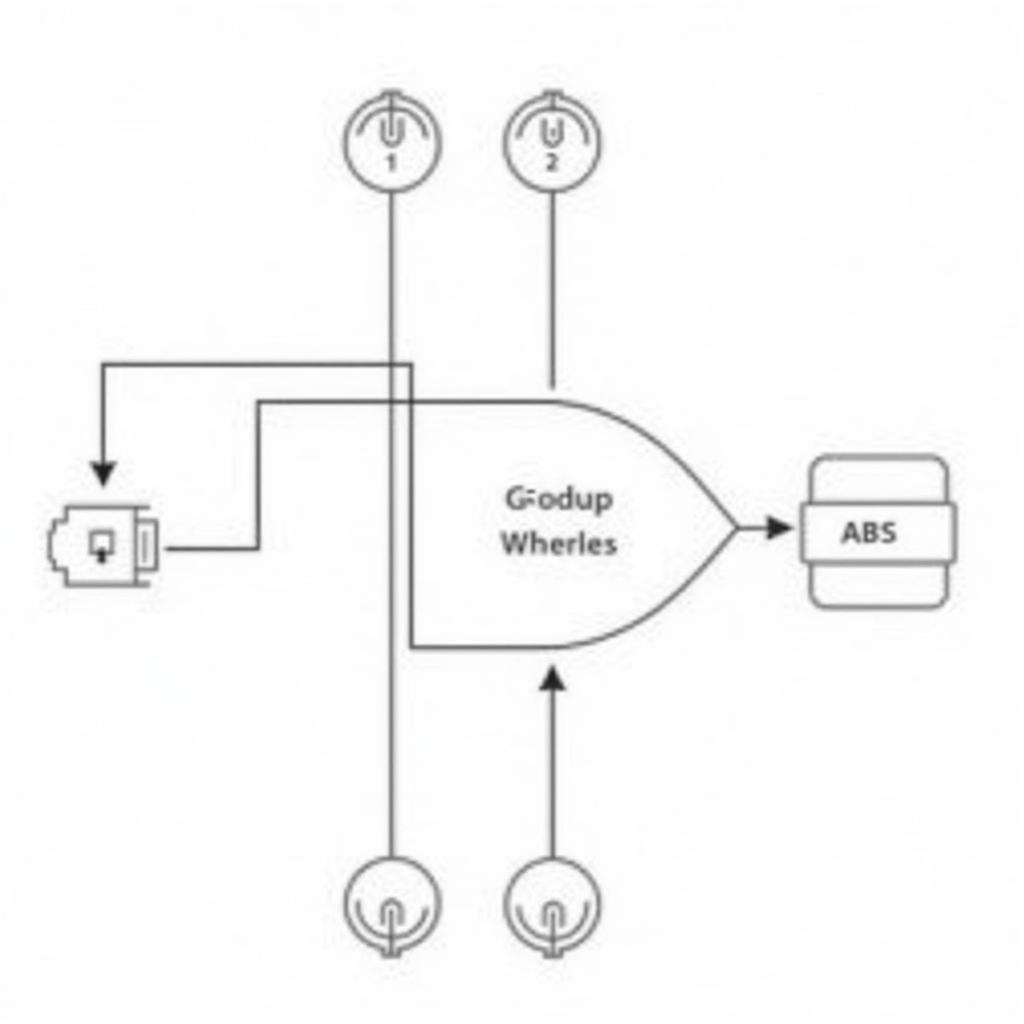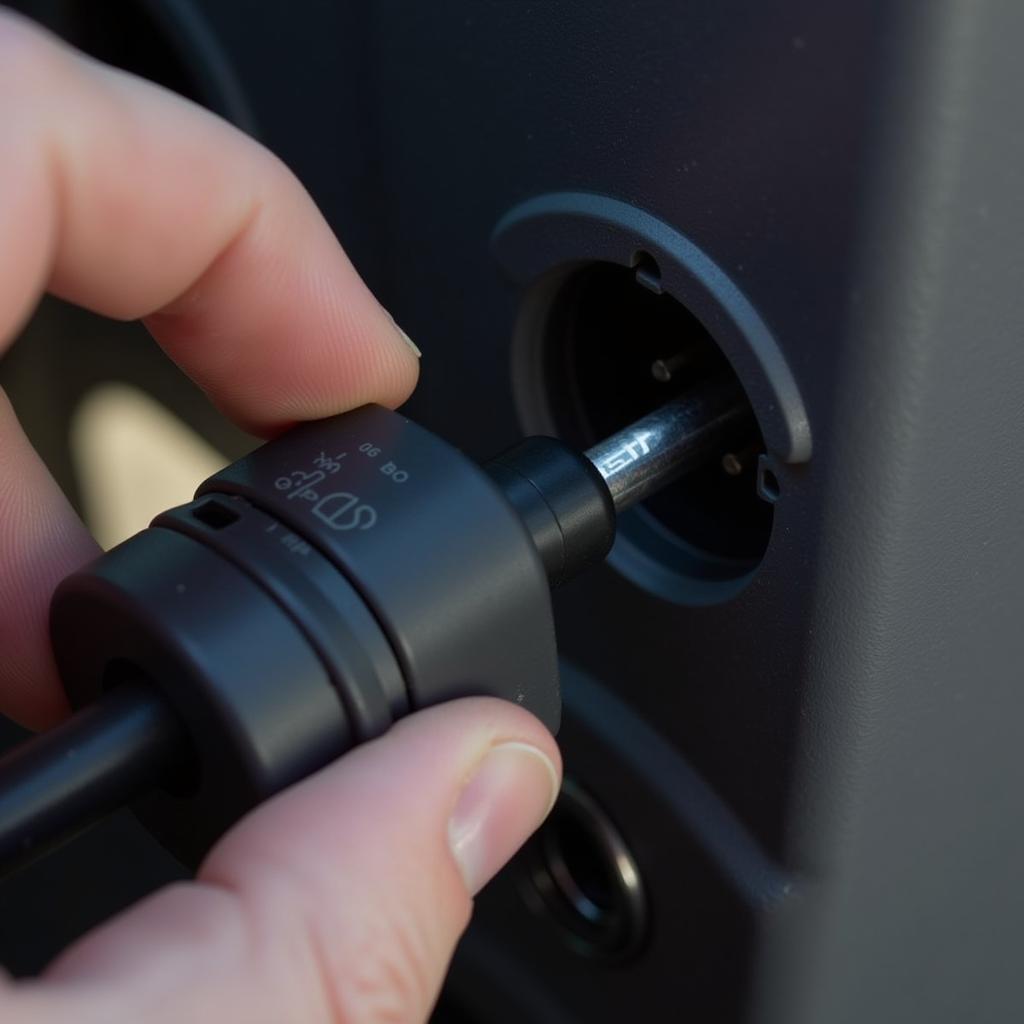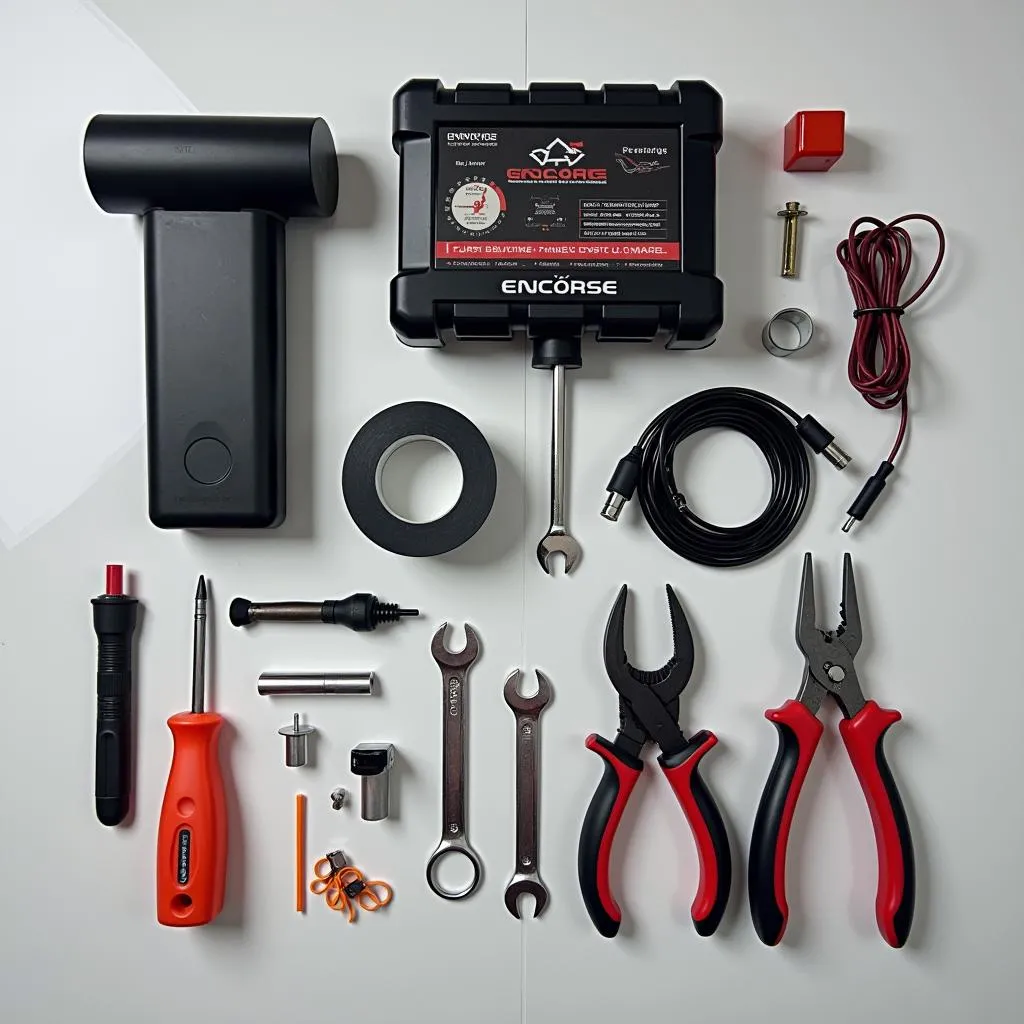The anti-lock brake warning light (ABS light) on your GMT800 truck or SUV can be a real headache. This amber-colored light, often accompanied by the words “ABS” or “Anti-Lock,” illuminates your instrument cluster to warn you about a potential issue with your anti-lock braking system. While it might be tempting to ignore, driving with the ABS light on is never a good idea. It could indicate a problem that compromises your safety on the road.
This comprehensive guide will walk you through the common reasons behind that pesky ABS light on your GMT800 and provide clear steps on how to diagnose and potentially fix the issue yourself.
Understanding Your GMT800’s Anti-Lock Brake System
Before we delve into the solutions, let’s take a moment to understand how the anti-lock brake system functions on your GMT 800. The ABS is a crucial safety feature designed to prevent your wheels from locking up during hard braking. It does this by monitoring wheel speed sensors and modulating brake pressure to each wheel individually.
 GMT800 ABS System
GMT800 ABS System
Common Causes of an ABS Warning Light on a GMT800
Several culprits could be triggering the ABS warning light on your GMT800. Here are the most frequent ones:
1. Faulty Wheel Speed Sensors
Wheel speed sensors are the eyes and ears of your ABS system. They constantly monitor the rotational speed of each wheel and relay this information to the ABS control module. A malfunctioning sensor can disrupt this data flow, leading to an illuminated ABS light.
What causes a wheel speed sensor to fail?
- Dirt and Debris: The most common culprit is a buildup of dirt, grime, or metallic debris on the sensor’s magnetic pickup.
- Physical Damage: A damaged sensor, often due to road hazards or even a worn-out wheel bearing, can also cause issues.
- Wiring Problems: Corroded or damaged wiring connecting the sensor to the ABS module can disrupt the signal.
2. ABS Control Module Malfunction
The ABS control module acts as the brain of your anti-lock brake system. It receives data from the wheel speed sensors and, based on this information, regulates hydraulic pressure to the brakes. A malfunctioning control module can lead to a range of ABS-related issues, including an illuminated warning light.
3. Low Brake Fluid Level
The lifeblood of any braking system is brake fluid. If the fluid level drops too low, it can trigger the ABS warning light. This often indicates a leak in your brake lines, a worn-out master cylinder, or excessively worn brake pads.
4. Blown ABS Fuse
Like any electrical system in your vehicle, the ABS system relies on fuses to protect its components. A blown ABS fuse will disable the system and illuminate the warning light.
Diagnosing the ABS Warning Light on Your GMT800
Now that you have a better understanding of the common culprits, let’s dive into diagnosing the root cause of the ABS light on your GMT800:
1. Visual Inspection:
- Check the Brake Fluid: Begin with a simple check of the brake fluid level in the master cylinder reservoir. If it’s low, you might have a leak.
- Inspect the ABS Fuse: Locate the ABS fuse in your vehicle’s fuse box (consult your owner’s manual). If the fuse is blown, replace it with a new one of the correct amperage.
2. Code Retrieval:
- Use an OBD-II Scanner: To pinpoint the exact issue, you’ll need an OBD-II scanner. This handy tool allows you to read the diagnostic trouble codes stored in your vehicle’s computer. Connect the scanner to the OBD-II port usually located under the driver’s side dash.
- Interpret the Codes: Once you retrieve the codes, consult your owner’s manual or an online resource to understand their meaning. This will provide valuable clues about the problematic component.
 Using an OBD-II Scanner on a GMT800
Using an OBD-II Scanner on a GMT800
3. Further Diagnosis Based on Codes:
- Wheel Speed Sensor Codes: If the code points to a wheel speed sensor, you’ll need to inspect the sensor and its wiring harness for damage or debris buildup. Cleaning the sensor or replacing it might be necessary.
- ABS Module Codes: Codes related to the ABS module often require specialized knowledge and tools to diagnose and repair. In such cases, it’s best to consult a qualified mechanic or dealership.
Resetting the ABS Light After Repairs
After addressing the underlying issue that triggered the ABS warning light, you’ll likely need to reset the light. This can usually be done in two ways:
- Automatically: In some cases, the ABS light might reset itself after you’ve driven the vehicle for a short distance and the system detects that the problem has been resolved.
- Manually: You can manually reset the light using an OBD-II scanner. Some scanners have a specific “reset codes” function, while others might require you to clear the codes from the system’s memory.
A Word of Caution: While this guide provides a general overview of diagnosing and addressing ABS warning light issues, it’s important to remember that working on brake systems can be dangerous.
Expert Insight: “I always recommend that if you are not comfortable working on your vehicle’s braking system, it’s best to err on the side of caution and consult a trusted mechanic,” says Mark Stevenson, a certified automotive technician with over 20 years of experience. “Brakes are critical to your safety, and any mistakes could have serious consequences.”
Preventing Future ABS Warning Lights
Here are a few proactive steps you can take to reduce the chances of encountering that dreaded ABS warning light in the future:
- Regular Brake Fluid Checks: Make it a habit to check your brake fluid level at least once a month.
- Timely Brake Inspections: Schedule a comprehensive brake inspection with a qualified mechanic at least once a year or every 12,000 miles.
- Quality Brake Pads: Invest in high-quality brake pads and shoes to ensure optimal braking performance and longevity.
Remember: Your vehicle’s braking system is your lifeline on the road. Don’t ignore warning signs. Addressing issues promptly and practicing preventative maintenance will keep you driving safe and confident.

